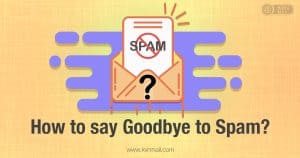- Hook: Are your perfectly crafted emails disappearing into the abyss of the spam folder? You’re not alone. The journey from your server to your recipient’s inbox is a technical obstacle course.
- The Problem: Most marketers focus on content and design, but the secret to success lies beneath the surface: technical deliverability. A 1% drop in deliverability can translate to thousands in lost revenue.
- Thesis: This post breaks down the critical, non-negotiable technical components—SPF, DKIM, and DMARC—you need to implement today to verify your identity, build trust with Internet Service Providers (ISPs), and ensure your emails reach the primary inbox.
Section 1: The Identity Crisis—Verifying Your Sender Reputation (Email Authentication)
Heading 1: Why Authentication is Your Digital Passport
- Concept: ISPs like Gmail and Outlook need to confirm you are who you say you are. Authentication protocols are the standard way to prove your email hasn’t been spoofed or tampered with.
- Key Action: Explain that a lack of proper authentication is an immediate red flag for spam filters.
Heading 2: Understanding the Big Three (SPF, DKIM, DMARC)
- Sender Policy Framework (SPF):
- What it is: A TXT record published in your DNS that lists all the IP addresses and domains authorized to send emails on your behalf.
- The Problem it Solves: Prevents spammers from using your domain to send fraudulent emails (spoofing).
- Actionable Tip: Be sure to update your SPF record whenever you switch ESPs (Email Service Providers).
- DomainKeys Identified Mail (DKIM):
- What it is: A digital signature attached to the header of every email you send. This signature verifies that the email content hasn’t been modified since it left your server.
- The Problem it Solves: Confirms message integrity.
- Actionable Tip: Ensure your DKIM keys are rotated periodically for security.
- Domain-based Message Authentication, Reporting, and Conformance (DMARC):
- What it is: The policy layer that tells receiving servers what to do if an email fails both SPF and DKIM checks (e.g., “quarantine it” or “reject it”).
- The Problem it Solves: Gives you control and provides reporting on who is trying to send emails using your domain.
- Actionable Tip: Start with a “p=none” policy to monitor, then move to “p=quarantine” or “p=reject” once you’re confident in your setup.
Section 2: Building Trust from Zero—The IP Warm-up Protocol
Heading 1: The Rookie Mistake: Sending Too Much, Too Soon
- Concept: If you move from a new IP address or domain and suddenly send 100,000 emails, ISPs will treat you as a potential threat. They require a track record.
- Key Action: Define IP Warm-up as the process of gradually increasing your email volume to build a reputation.
Heading 2: Your 5-Day IP Warm-up Checklist
- Day 1-2: Start with your most engaged subscribers (subscribers who have opened or clicked in the last 30 days). Send a small, consistent volume (e.g., 2,000 emails per day).
- Day 3-4: Increase volume by no more than 50%. Focus on high-quality content that encourages opens and clicks.
- Day 5+: Continue the gradual increase, expanding to less active segments. Closely monitor open rates, bounce rates, and spam complaints.
- Crucial Metric: Maintain an acceptable spam complaint rate (ideally under 0.1%). High engagement is the goal.
Section 3: Behind the Scenes—Infrastructure and Maintenance
Heading 1: Dedicated vs. Shared IP Addresses
- Shared IP: Good for low-volume senders; your reputation is tied to others using the same IP.
- Dedicated IP: Essential for high-volume senders; you control your own reputation, but you must be disciplined about maintaining it.
- Actionable Tip: If you send over 100,000 emails a month, you should seriously consider a dedicated IP.
Heading 2: The Importance of Suppression Lists and Hard Bounces
- Hard Bounces: Immediately remove any addresses that result in a permanent delivery failure (hard bounce). Sending to them repeatedly flags you as a careless or malicious sender.
- Spam Complaints: Integrate your ESP with Feedback Loops (FBLs) to automatically suppress users who click “Mark as Spam.” This is non-negotiable for protecting your score.
Conclusion:
Technical deliverability is the bedrock of every successful email marketing campaign. By meticulously implementing SPF, DKIM, and DMARC, warming up your IP, and rigorously maintaining a clean list, you move from hoping your emails land in the inbox to guaranteeing it. Stop wasting your content—verify your tech stack and see your engagement soar.



